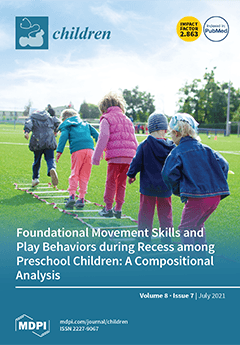Neonatal resuscitation (NRP) guidelines suggest targeting 85–95% preductal SpO
2 by 10 min after birth. Optimal oxygen saturation (SpO
2) targets during resuscitation and in the post-resuscitation management of neonatal meconium aspiration syndrome (MAS) with persistent pulmonary hypertension (PPHN) remains uncertain. Our
[...] Read more.
Neonatal resuscitation (NRP) guidelines suggest targeting 85–95% preductal SpO
2 by 10 min after birth. Optimal oxygen saturation (SpO
2) targets during resuscitation and in the post-resuscitation management of neonatal meconium aspiration syndrome (MAS) with persistent pulmonary hypertension (PPHN) remains uncertain. Our objective was to compare the time to reversal of ductal flow from fetal pattern (right-to-left), to left-to-right, and to evaluate pulmonary (Q
PA), carotid (Q
CA)and ductal (Q
DA) blood flows between standard (85–94%) and high (95–99%) SpO
2 targets during and after resuscitation. Twelve lambs asphyxiated by endotracheal meconium instillation and cord occlusion to induce MAS and PPHN were resuscitated per NRP guidelines and were randomized to either standard (85–94%) or high (95–99%) SpO
2 targets. Out of twelve lambs with MAS and PPHN, six each were randomized to standard and high SpO
2 targets. Median [interquartile range] time to change in direction of blood flow across the ductus arteriosus from right-to-left, to left-to-right was significantly shorter with high SpO
2 target (7.4 (4.4–10.8) min) compared to standard SpO
2 target (31.5 (21–66.2) min,
p = 0.03). Q
PA was significantly higher during the first 10 min after birth with higher SpO
2 target. At 60 min after birth, the Q
PA, Q
CA and Q
DA were not different between the groups. To conclude, targeting SpO
2 of 95–99% during and after resuscitation may hasten reversal of ductal flow in lambs with MAS and PPHN and transiently increase Q
PA but no differences were observed at 60 min. Clinical studies comparing low and high SpO
2 targets assessing hemodynamics and neurodevelopmental outcomes are warranted.
Full article






